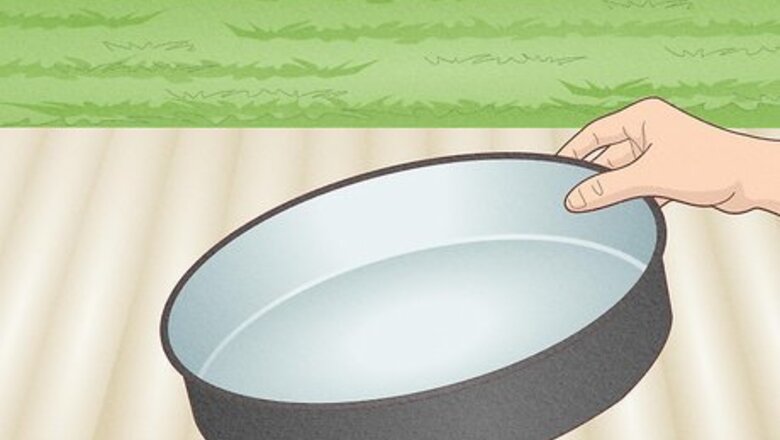
views
Making a Mosaic Stepping Stone
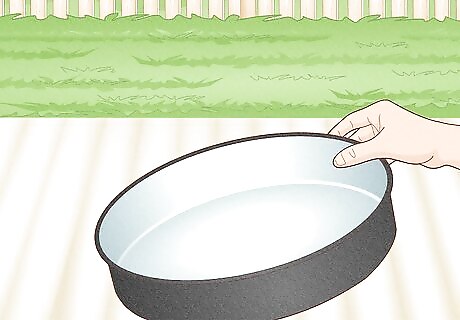
Choose a mold for your stepping stone. Cake pans and pie pans work the best, but you can also use plastic tubs or cardboard boxes. You can also find special molds for making stepping stones in an arts and crafts store. The mold needs to be at least 2 inches (5.1 cm) thick. If the edges of your mold are not rigid, then you will need to use something to reinforce them until the concrete hardens. This usually takes about 24 hours.
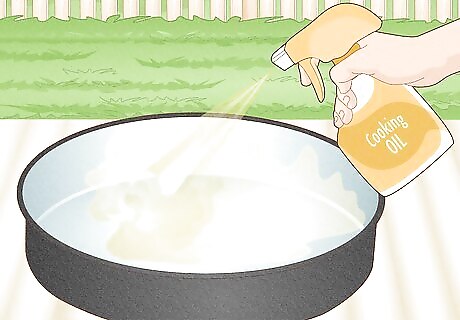
Coat the inside of your mold with petroleum jelly or nonstick cooking spray. This will make it easier to remove the stepping stone from the mold. If you are using a cardboard mold, cover the inside of the mold with a plastic sheet (ie: plastic wrap or a plastic bag) first. It would be a good idea to grease the plastic sheet afterwards as well. Keep in mind that if the plastic has any wrinkles or seams in it, then these will likely show on the concrete as well.

Put on protective gear. This is very important. Concrete is dusty and can irritate sensitive skin. It's not something you want getting into your lungs either. Put on a pair of safety goggles, a dust mask, and work gloves. Make sure to keep your workspace, tools, and mixing equipment tidy and avoid getting concrete on yourself as well. Wash your hands with mild vinegar followed by hand soap and water to reduce irritation to your skin if you get concrete on it. Avoid getting dry or wet concrete in your eyes. If you do get concrete in your eyes, flush them out with generous amounts of cool water immediately. If needed, go to urgent care, an emergency room, or to see an optometrist.
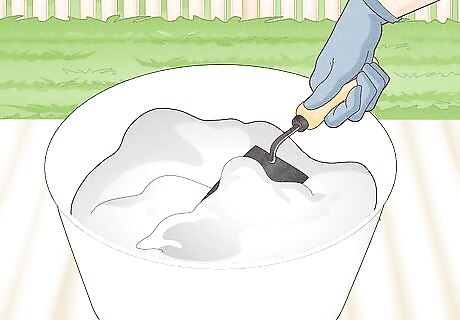
Prepare the concrete. Each brand will be a little different, so follow the instructions on your container closely. If the concrete is very wet, add some more dry concrete powder to it. The concrete should feel like wet sand. You want it to clump together when you squeeze it. If you plan to mix a few separate batches of concrete, then use measuring cups for the concrete and water to keep the mixtures consistent.
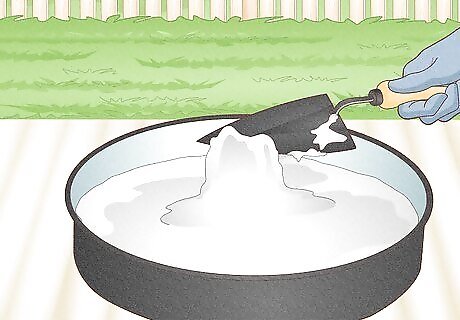
Fill the mold partway with concrete. Use a trowel to spread it around so that it covers the bottom layer of the mold. If you are using a square mold, make sure that it reaches and fills the corners. You want it to be about 1 inch (2.5 cm) thick. You can also tap on the edges of the mold to make sure that the concrete spreads out and fills in any air pockets.
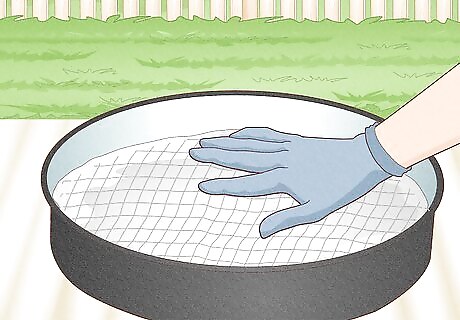
Press some chicken wire into the concrete. Cut a scrap of chicken wire until it is 1 inch (2.5 cm) smaller than your mold. Set it into your mold and gently press it into the wet concrete. This step is not absolutely necessary, but it will help prevent the stepping stone from cracking later on. If you can't find chicken wire, you can use sturdy, wire mesh instead. This will actually be more durable than wide spaced chicken wire.
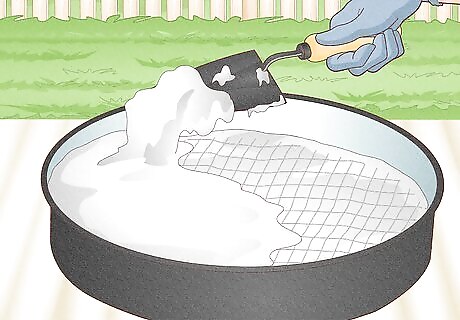
Pour more concrete on top of the wire. Use a trowel to spread the concrete around and make it smooth. You want this layer to be about 1 inch (2.5 cm) thick as well. Tap on the edges of the mold again to make sure that the concrete spreads out and fills in any air pockets.
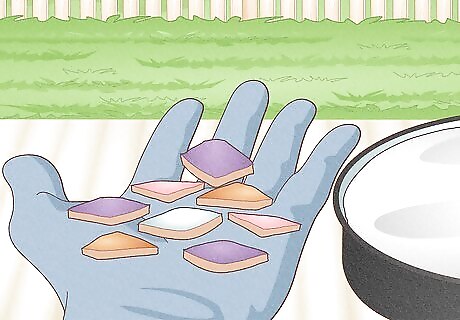
Choose your desired mosaics. Mosaic tiles are a popular choice, but you can use other items as well, such as broken pottery, glass gems, sea glass, seashells, and pretty stones. If you are using glass gems or sea glass, paint the back of each piece with white spray paint. This will help keep them looking bright and prevent the concrete from dulling them down. Let the paint dry before putting them into a mold. Make sure that there are no sharp or jagged edges sticking out of the concrete, especially if people will walk on the mosaics. This may lead to injuries.
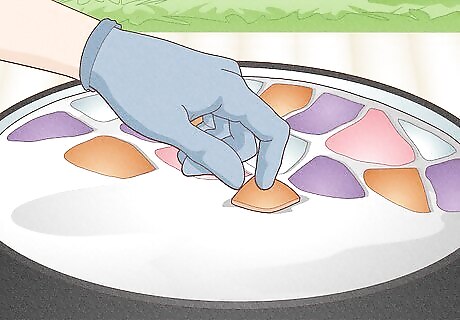
Press your desired mosaics into the concrete. You can use a random pattern, or arrange the decorations to make words or images such as a name or the moon and stars. If your decorations are sinking into the concrete, wait about 30 minutes before trying again. This will give the concrete time to set up again. Press the mosaics far enough into the concrete so that they don't stick out. This way, you'll be less likely to tip over them. You can also use a stamp to press mosaics into concrete.
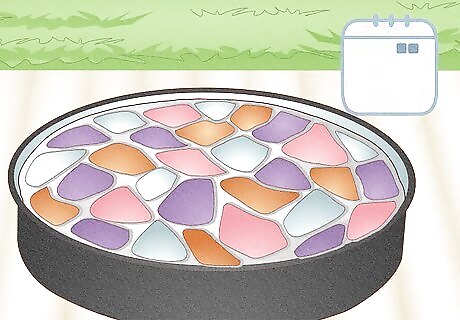
Allow the concrete to set for 2 days before removing it. After two days, flip the mold over onto a soft surface, such as a patch of grass, a towel, or a blanket. Gently tap the bottom, then lift the mold away.
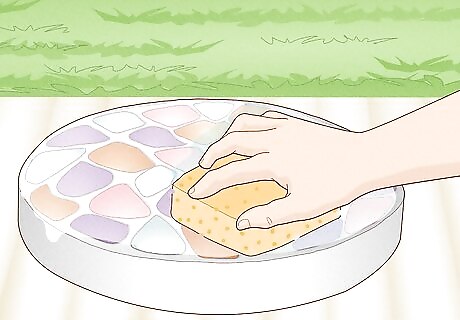
Clean the stepping stone up. Sand away any rough areas with sandpaper, and fill in any holes with aggregate free cement. Wipe the top of the stepping stone clean with a wet sponge or an old toothbrush. This will remove any cement that got stuck to glass or porcelain tiles or gems. Let the stepping stone dry before moving on.
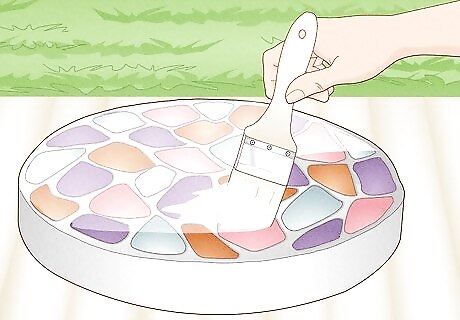
Seal the stepping stone, if desired. You can leave your stepping stone as is, or you can varnish the top, decorated part to give it that wet look. Sealing the stones will also help them to last longer. A high-quality marine varnish will work especially well here. You can also use a clear, outdoor-quality varnish instead. Let the varnish cure completely before using the stone. Curing times are different from drying times. Read the label on your varnish carefully. You only need to varnish the top, decorated part. Pay attention to the finish. A matte finish is not recommended for glass gems or tiles because it will dull them down.
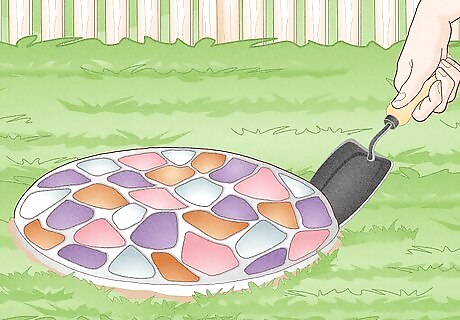
Set the stepping stone into your garden. Choose a spot in your garden for the stepping stone. Use a shovel or trowel to dig a shallow, 2 inches (5.1 cm) deep hole in the soil. Set the stone into it, design side up, then gently pat the soil around it to blend it in with the surrounding area. You can also prop up stepping stones to display them. They do not all have to be flat.
Making a Decorative Leaf-Shaped Stone
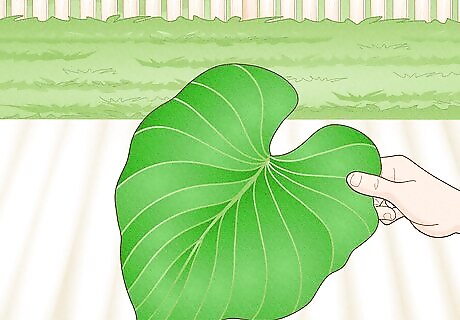
Choose a large, sturdy leaf to use as your base. The leaf needs to be at least 10 inches (25 cm) to 12 inches (30 cm) across, otherwise it will be too small to use as a stepping stone. Great leaves include gunnera, hosta, and rhubarb. Make sure that the leaf does not have any holes or tears. Some cucumber, squash, and pumpkin leaves may also be big enough. Some calla lily leaves may also be large enough. Another option is to lay the leaf or leaves on tracing paper, place the paper on a sturdy base that you can cut to match the leaf shape, and then reinforce the sides with 2 inches (5.1 cm) to 3 inches (7.6 cm) of edging.
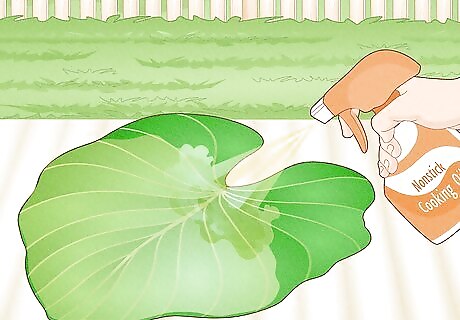
Spray the front of the leaf with nonstick cooking spray. You can also brush some cooking oil onto it. This will help keep the concrete from sticking and make it easier to remove.
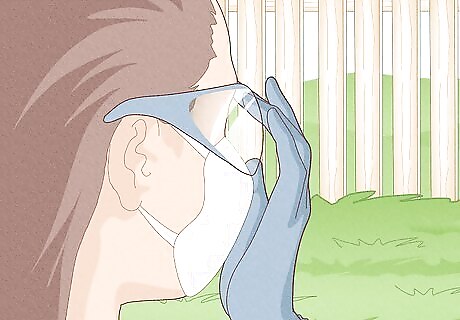
Put on protective gear. This is important, as concrete dust can irritate your lungs, eyes, and skin. You will need safety goggles, rubber gloves, and a dust mask. At this point, it would also be a good idea to put on a set of old clothes and protect your work surface with a plastic sheet. Keep your workspace, tools, and mixing equipment tidy. If you get concrete on your skin, then wash your hands with mild vinegar followed by hand soap and water to reduce irritation to your skin. If you get concrete in your eyes, then flush them out with generous amounts of cool water immediately. Go to urgent care, an emergency room, or to see an optometrist as soon as possible.
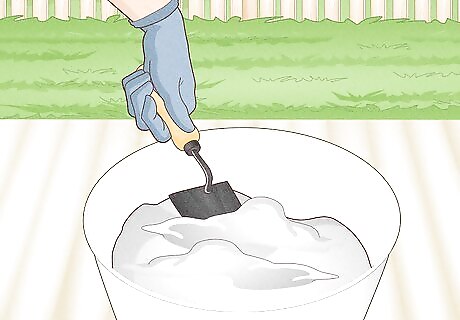
Choose and prepare your concrete. Each brand will be a little different, so prepare the concrete according to the instructions on the bag. You want the concrete to be more dry and firm than wet and soupy. It should clump together like wet sand when you squeeze a handful of it. Use a lightweight concrete with little gravel for a smoother, decorative stepping stone. Use a heavier concrete with more gravel for a strong, sturdy stepping stone that will get lots of foot traffic.
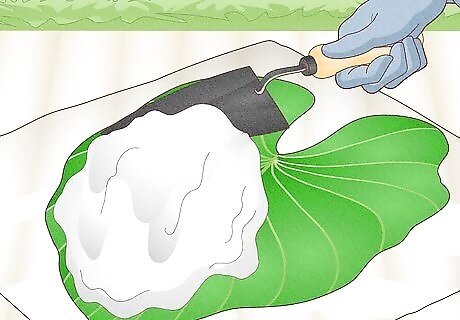
Pile the concrete onto the front of the leaf. Place the leaf down onto a large, plastic sheet. Use a trowel to scoop the concrete onto the leaf. Make the layer about 2 inches (5.08 centimeters) thick.
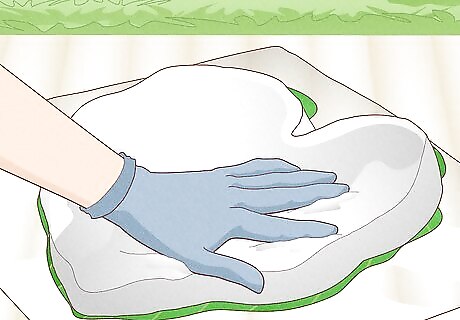
Pat the concrete down. While still wearing your gloves, gently pat the concrete down onto the leaf. If you need to, guide it towards the edge of the leaf, and wipe any excess concrete away. Do not to let the concrete slop over the edges of the leaf.
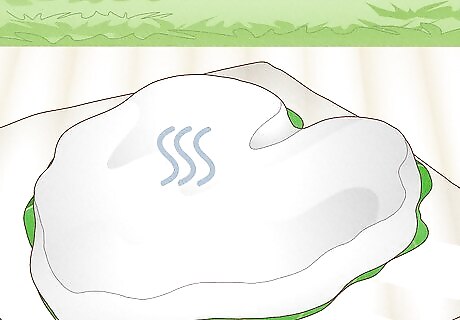
Allow for the concrete to cure. How long this takes depends on the type of concrete you are using. This will typically take about 2 to 3 days.
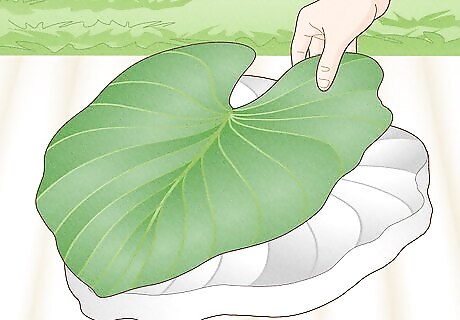
Remove the leaf once the concrete has dried. Flip the stepping stone over, then peel the leaf away and discard it. If there are bits stuck to the concrete, you can scrape them away with water and an old toothbrush. You will be left with a leaf-shaped stepping stone. Depending on how lightweight the concrete was, you may also see the leaf's veins embedded into the concrete. Use a hammer and chisel to chip away any flakes of overhanging concrete on the edges of the stepping stone.
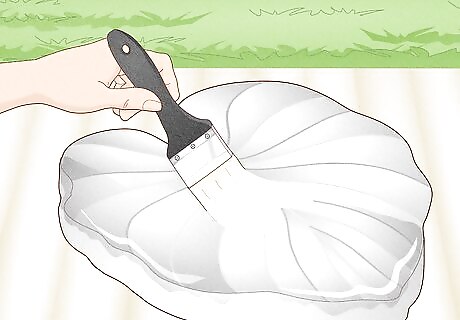
Varnish the stepping stone, if desired. You don't have to do this, but it will give your leaf stepping stone a nice, wet look. Use a high-quality outdoor or marine varnish to lightly coat the front of the stepping stone.
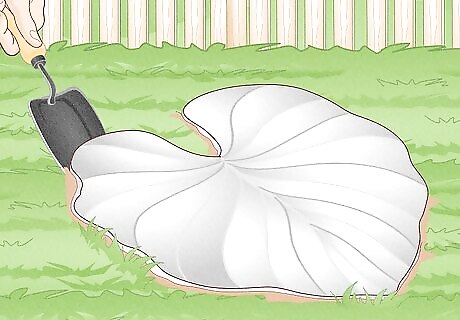
Set the stepping stone into your garden. Choose a spot for the stone, then dig a shallow how that is 2 inches (5.1 cm) deep. Set the stepping stone into the hole, then fill any gaps in with more soil.
Other Stepping Stone Options
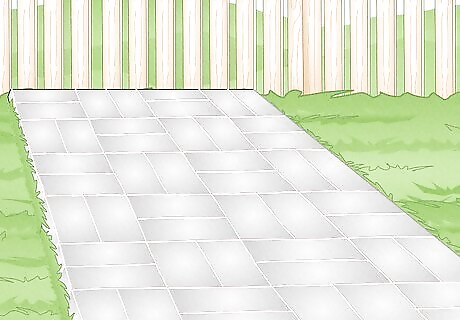
For modern landscape design, try hard trowel pavers. These usually come in rectangular or square shapes. These smooth concrete pavers will make a yard look more contemporary. In the end though, you can use a wide variety of materials for your pavers.
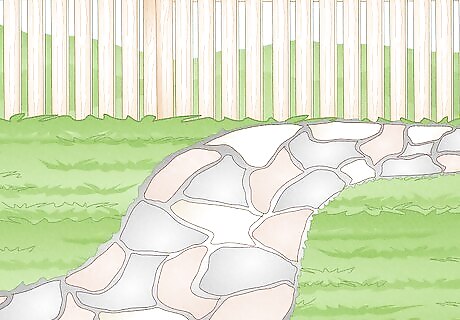
For an organic, lighter mood landscape, try less linear flagstones. Ones with more curve and linearity will flow naturally together with the landscape. Flagstones will be cheaper depending on how far they've been trucked from, and usually come in a grayish color.















Comments
0 comment